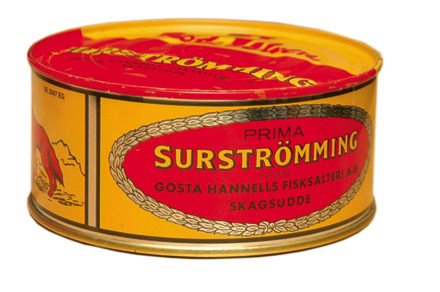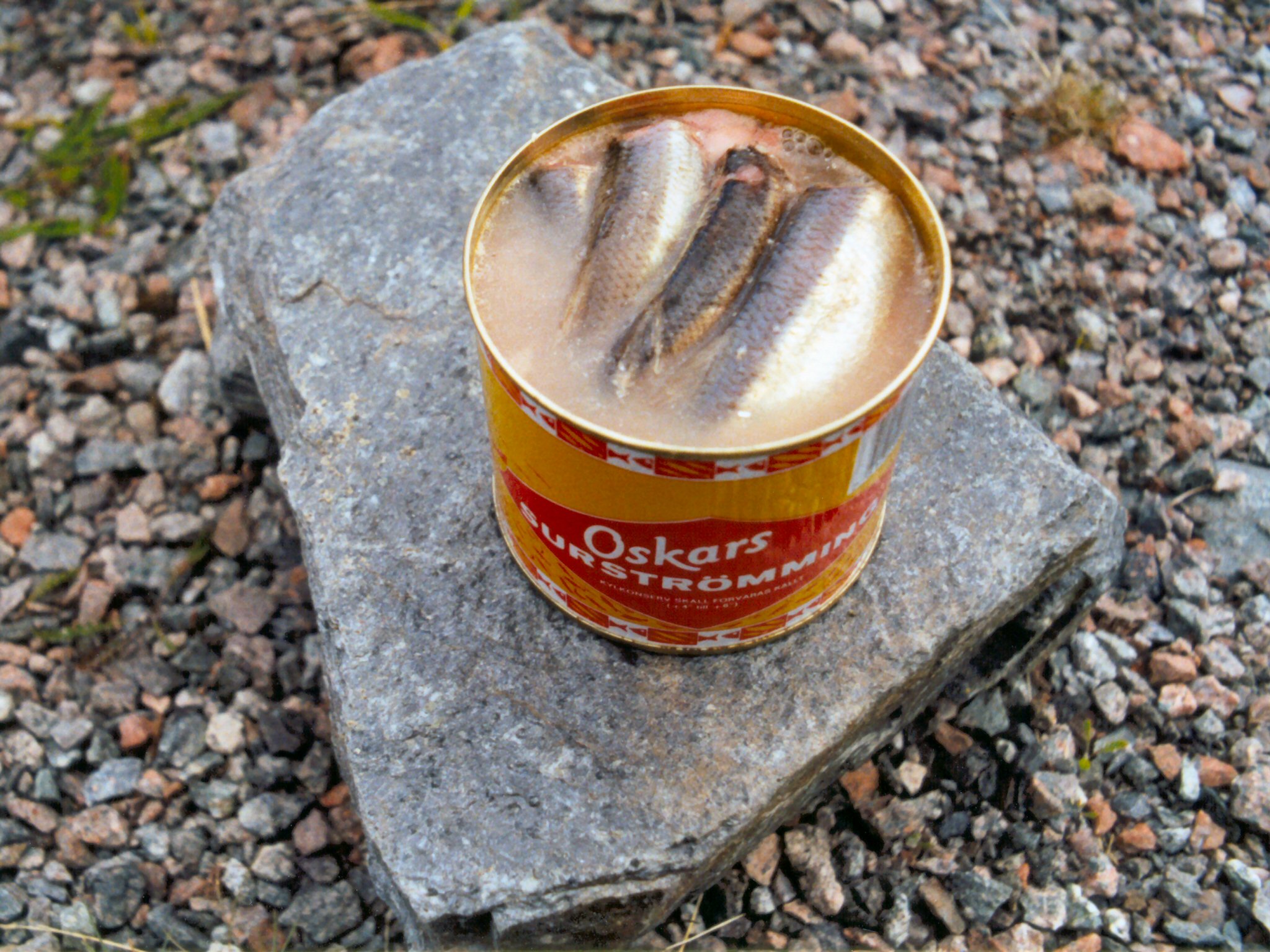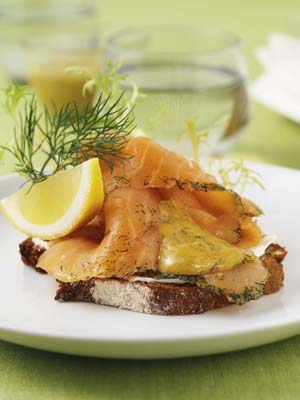The world's most smelly fish
Travelers visiting the north of Sweden two hundred years ago, particularly foreigners with sensitive noses, spoke from time to time of the extraordinary stink that blanketed the countryside.
-
 Imagine the smell when one thousand cans like the one above, filled with ”surströmming,” exploded in Borkbo…
Imagine the smell when one thousand cans like the one above, filled with ”surströmming,” exploded in Borkbo… -
-
The world's most smelly fish
One 18th-century merchant wrote home complaining that on these journeys through Sweden, it was necessary to abstain from kissing the otherwise attractive local women on account of the smell of sour fish that enveloped them. He did not realize the odor was simply a by-product of one of Sweden’s oldest culinary traditions: fermented fish. The fermented herring is an exotic delicacy presumably only a native Swede (and perhaps only a norrlanning, or northerner) can fully appreciate. Each August, traditionally the third Thursday of the month, there is a rush to buy the year’s harvest of surstromming. Time for surströmming -
 When opened, the can releases a mighty puff of mercaptane gas, a substance so potent that 0.000,000,000,04 of a gram per liter of air is quite enough to make it fully perceptible...
When opened, the can releases a mighty puff of mercaptane gas, a substance so potent that 0.000,000,000,04 of a gram per liter of air is quite enough to make it fully perceptible... -
-
Once homely survival food, pungent preserved fish dishes such as gravlax and surströmming have evolved into present-day delicacies – for Swedes, anyway, if not foreign guests.
Gravlax literally means “grave salmon.” The name refers to how the original, rather primitive version of gravlax was prepared. Sweden’s fishing places were found along its great northern rivers, which held as many salmon in the Middle Ages as Alaska’s rivers do today. But the farms that owned the fishing rights were often far away, and that made it difficult to transport the catch. When the time came for the salmon to make their way upriver in the spring to spawn, it was impossible for a farmer’s cart to penetrate the sodden, snow-choked, pathless forests. And salt was too expensive for anyone to afford enough for a proper salting. But a person could carry a few bags of salt on his back when he set off on foot or horseback to fish, and that was enough to preserve the salmon – at least partially – until it came to market. Freshly caught salmon were placed into a shallow “grave” dug into the earth, lightly salted and stored there. The oft-reported smell emanated from places where the salmon had fermented. -
 Surströmming (canned fermented Baltic herring) is caught in spring. It is fermented in barrels for one to two months, then tinned where the fermentation continues. Half a year to a year later, gases have built up sufficiently for the once cylindrical tins to bulge into a more rounded shape.
Surströmming (canned fermented Baltic herring) is caught in spring. It is fermented in barrels for one to two months, then tinned where the fermentation continues. Half a year to a year later, gases have built up sufficiently for the once cylindrical tins to bulge into a more rounded shape. -
Today gravlax is prepared in kitchens all over Sweden and is cured rather than fermented. But the original method of fish preparation survives on a smaller scale and under more modern conditions in Sweden to this day, in the form of surströmming, or fermented herring. This is an exotic delicacy presumably only a native Swede (and perhaps only a norrlänning, or northerner) can fully appreciate. Each August, there is a rush to buy the year’s harvest of surströmming. The fish is sold in ordinary tins that, by the time they are sold, have become more or less spherical in shape due to the pressure caused by the fermentation of its contents. When opened, the can releases a mighty puff of mercaptane gas, a substance so potent that 0.000,000,000,04 of a gram per liter of air is quite enough to make it fully perceptible even to the underdeveloped human olfactory organ.
-
 Gravlax has turned up on the menus of some of the best restaurants in the world—although that said, the delicious gravlax sandwich here is from one of IKEA's restaurants in America.
Gravlax has turned up on the menus of some of the best restaurants in the world—although that said, the delicious gravlax sandwich here is from one of IKEA's restaurants in America. -
And “perceptible” is a gross understatement
Those Swedes who are devotees of the surströmming cult assemble on late summer evenings for their ritual consumption of this unusual dish, which is served – preferably outdoors – with mandelpotatis, or tiny “kidney” potatoes (a delicious variety native to northern Sweden) and a flat rye bread called tunnbröd.
A more common member of the preserved fish family is the salt herring, which does duty in the smörgåsbord, sauced, spiced and marinated in a variety of ways. Eaten with new potatoes, sour cream, onions and dill (the most Swedish of all seasonings) and followed by a couple of ice-cold glasses of snaps, marinated herring is the main dish consumed when Swedes celebrate the summer solstice at Midsummer. -
Written by Professor Jan-Öjvind Swahn
-
Gravlax has turned up on the menus of some of the best restaurants in the world—although that said, the delicious gravlax sandwich here is from one of IKEA's restaurants in America. The furniture chain's Swede shops also sell an already prepared gravlax. To locate an IKEA near you, see http://www.ikea.com
-
-
